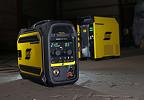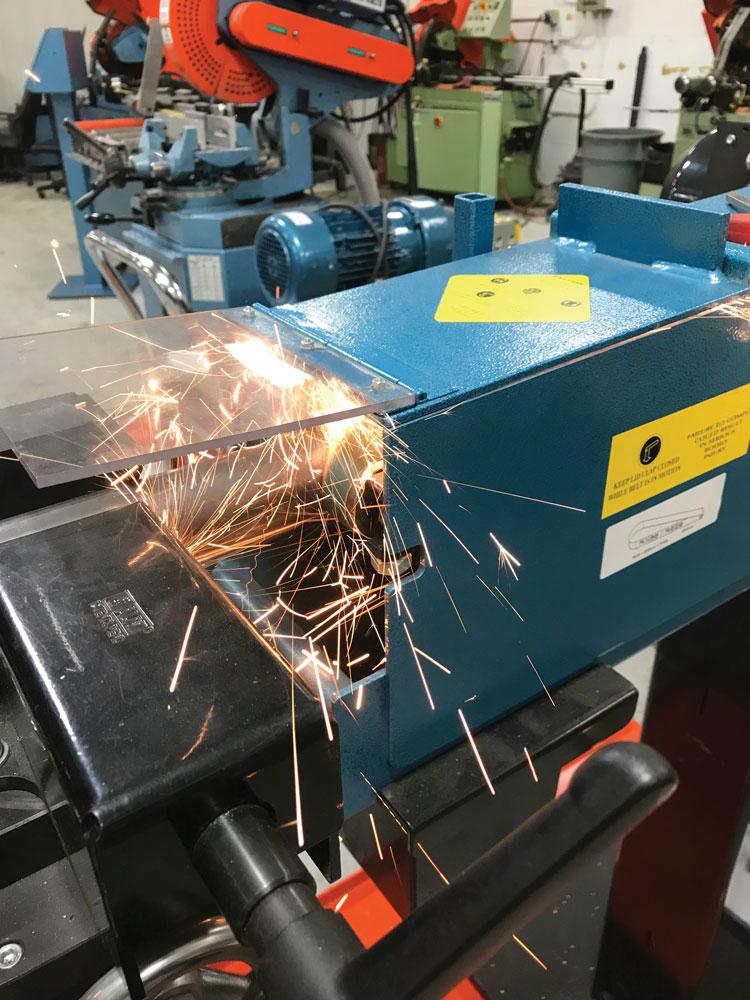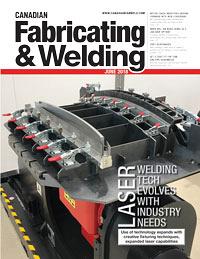- FMA
- The Fabricator
- FABTECH
- Canadian Metalworking
Technology Spotlight: Get a tight fit for tube and pipe assemblies
Notching equipment with the right mandrel reduces weld time
- By Sue Roberts
- June 15, 2018
- Article
- Fabricating
Handrailings, race car frames, gates, fences, and furniture. Those are a few examples of structures that support and protect. Their construction typically involves steel or stainless steel tubes and pipes that have been notched, fitted, and welded to provide strength and durability.
Getting the right fit can be difficult when you are using a welding torch to manually cut the notch. Gaps where the tube doesn’t connect properly will need to be filled during the welding process.
Jerry Kroetch, president of Scotchman®, talked about how notching equipment can make working with tube and pipe assemblies easier and more efficient.
“Small fabricators who never know what job will come in through the door each day or maintenance departments that do their own repair will usually turn to a manual notcher for the one-off jobs. Electric machines that get the job done faster and with less operator fatigue are a good choice for production runs,” Kroetch said.
“With the manual or electric machines, notching is a one-step process. You slip the tube or pipe over the mandrel die until it butts up against the steel stop and make your cut. Since the top and the bottom of the pipe are notched in separate strokes, marks are scribed on the tool itself to help with positioning the material. You make your bottom notch, then manually rotate the tube or pipe so the corners match up with the scribed lines, and complete the notch. Both the manual and electric equipment notch at 90 degrees.”
An abrasive machine can produce angles between 30 and 90 degrees. If jobs frequently call for different angles or mitring, for example a stair railing that requires a 45-degree notch, an abrasive machine can provide custom ends by grinding rather than cutting. Notches with varying angles can be added to round or square tube and pipe from ½ in. to 4-in. Schedule 40 pipe on the company’s abrasive equipment.
Kroetch said, “A protractor on the machine helps line up the material to get the angle you want. Install the proper size mandrel, use the protractor to position the tube or pipe at the needed angle, engage the abrasive belt, and use the hand wheels to move the tube or pipe to the abrasive belt for grinding.”
Use Correct Mandrel
Having the correct mandrel size is important to creating a notch with a tight fit. One side of the equipment opens to allow tool-free changing of the mandrel die and the abrasive belt.
“If you have used the wrong size mandrel, you’ll have gaps when you go to fit the tube or pipe for welding and the welder will need to fill them in. It will take a larger weld and more welding time to fit the pieces together for the joint. A proper size mandrel will give you a perfect fit when you saddle a tube into the notch, and it will take a minimum amount of weld to finish,” said Kroetch.
The company’s abrasive tube notchers accommodate more than a dozen mandrel sizes from ½ to 4 in. OD. The 36-grit grinding belts, available in 4-in. and 6-in. widths and two lengths for different machine models, are self-sharpening to increase productivity. A top-mounted, guarded grinding surface can be used for additional grinding or deburring.
“The abrasive machine makes the radius on the top and bottom of the tube or pipe simultaneously. It creates a better fit but does take a few seconds longer compared to using a manual or electric machine because you are grinding the material off.”
Associate Editor Sue Roberts can be reached at sroberts@canadianfabweld.com.
Scotchman Industries, 800-843-8844, www.scotchman.com
About the Author

Sue Roberts
2135 Point Blvd
Elgin, IL 60123
815-227-8241
Sue Roberts, associate editor, contributes to both Canadian Metalworking and Canadian Fabricating & Welding. A metalworking industry veteran, she has contributed to marketing communications efforts and written B2B articles for the metal forming and fabricating, agriculture, food, financial, and regional tourism industries.
Roberts is a Northern Illinois University journalism graduate.
subscribe now


Keep up to date with the latest news, events, and technology for all things metal from our pair of monthly magazines written specifically for Canadian manufacturers!
Start Your Free Subscription- Trending Articles
CWB Group launches full-cycle assessment and training program

Achieving success with mechanized plasma cutting

3D laser tube cutting system available in 3, 4, or 5 kW

Brushless copper tubing cutter adjusts to ODs up to 2-1/8 in.

Welding system features four advanced MIG/MAG WeldModes

- Industry Events
MME Winnipeg
- April 30, 2024
- Winnipeg, ON Canada
CTMA Economic Uncertainty: Helping You Navigate Windsor Seminar
- April 30, 2024
- Windsor, ON Canada
CTMA Economic Uncertainty: Helping You Navigate Kitchener Seminar
- May 2, 2024
- Kitchener, ON Canada
Automate 2024
- May 6 - 9, 2024
- Chicago, IL
ANCA Open House
- May 7 - 8, 2024
- Wixom, MI


















